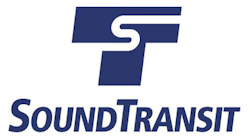UW study finds traces of drugs on transit buses at levels unlikely to cause risks to worker health
According to the University of Washington (UW), in 2021, when transit agencies were starting to see traffic again following lockdowns brought on by the COVID-19 pandemic, train and bus operators spotted a troubling trend. Some operators reported instances of people smoking drugs on their vehicles, and worried the haze it created could linger, potentially affecting workers’ physical and mental health.
Spurred by operators’ concerns, five transit agencies in Washington and Oregon – Sound Transit, King County Metro, Community Transit, Everett Transit and TriMet -- approached researchers at UW with a question: Were transit operators being exposed to drug smoke or residue in their workplace?
The UW research team conducted a limited-scope, first-of-its-kind assessment in spring 2022 and detected fentanyl and methamphetamine on board numerous transit vehicles, both in the air and on surfaces from 11 buses and 19 train cars on routes, runs and times of day when smoking of controlled substances was most likely to occur based on past incident reports. Nearly all the positive samples contained small amounts that are unlikely to cause acute medical conditions.
The university says it remains unclear if consistent, long-term exposure — such as that potentially faced by operators working a 40-hour week — poses a risk to worker health.
Researchers detected methamphetamine in 98 percent of surface samples and 100 percent of air samples while fentanyl was detected in 46 percent of surface and 25 percent of air samples. UW says one air sample exceeded federal recommendations for airborne fentanyl exposure at work established by the U.S. Environmental Protection Agency. The university notes no similar guidelines exist for airborne methamphetamine.
The assessment did not explore whether operators had any level of secondhand fentanyl or methamphetamine in their bodies. It also did not attempt to examine all transit routes and times and researchers said their findings should not be assumed to be typical for all transit vehicles at all times.
The five transit agencies that sponsored the study are continuing plans to implement health and safety improvements based on the study’s findings and recommendations.
“Operators are different from the riding public because operators are exposed for a much longer time period,” said Marc Beaudreau, a research industrial hygienist in the UW Department of Environmental & Occupational Health Sciences and co-leader of this assessment. “The potential long-term health effects associated with daily exposure have not been adequately researched, so until these relationships are established, we’re suggesting protective measures that transit agencies could implement to keep operators safe.”
Those mitigation measures include enhanced cleaning of surfaces, upgraded ventilation and filtration where possible and operator training. UW says training topics could include how operators should respond to smoking on board, real and perceived risks of secondhand drug exposure and how and when to use naloxone (Narcan) in overdose emergencies.
Researchers also emphasized the need to consider operators’ mental health, especially for those in recovery or who may have experienced trauma related to drug use.
“Even at a level that is considered ‘safe,’ it can still be stressful to see drug use in your workplace,” said Marissa Baker, a UW assistant professor of environmental and occupational health sciences who co-led the assessment. “Taking steps to protect operators will benefit their physical and mental well-being at work.”

Brandon Lewis | Associate Editor
Brandon Lewis is a recent graduate of Kent State University with a bachelor’s degree in journalism. Lewis is a former freelance editorial assistant at Vehicle Service Pros in Endeavor Business Media’s Vehicle Repair Group. Lewis brings his knowledge of web managing, copyediting and SEO practices to Mass Transit Magazine as an associate editor. He is also a co-host of the Infrastructure Technology Podcast.







